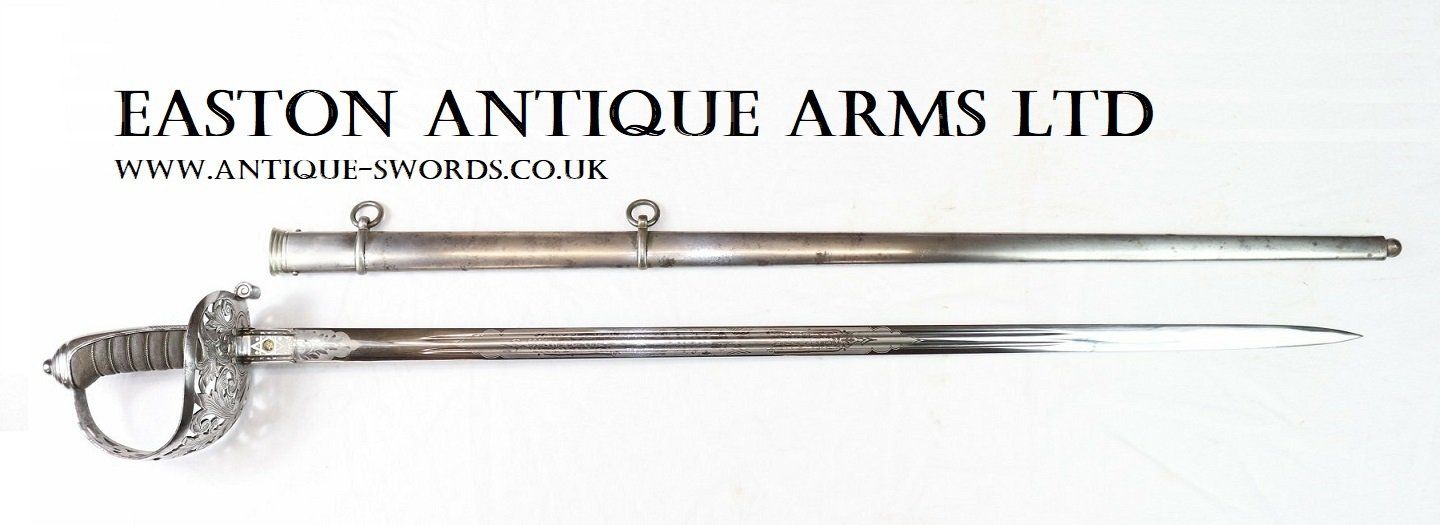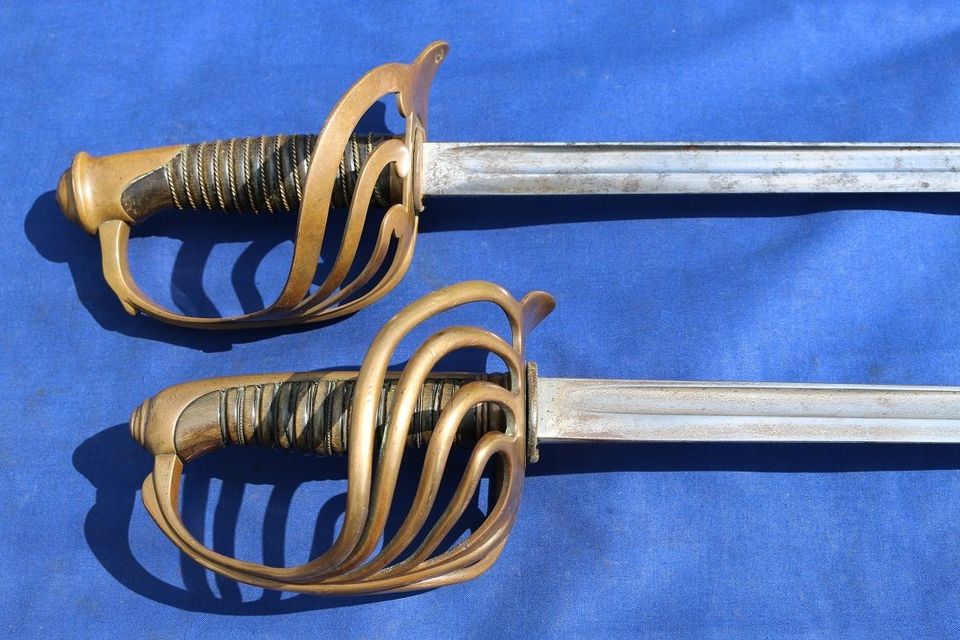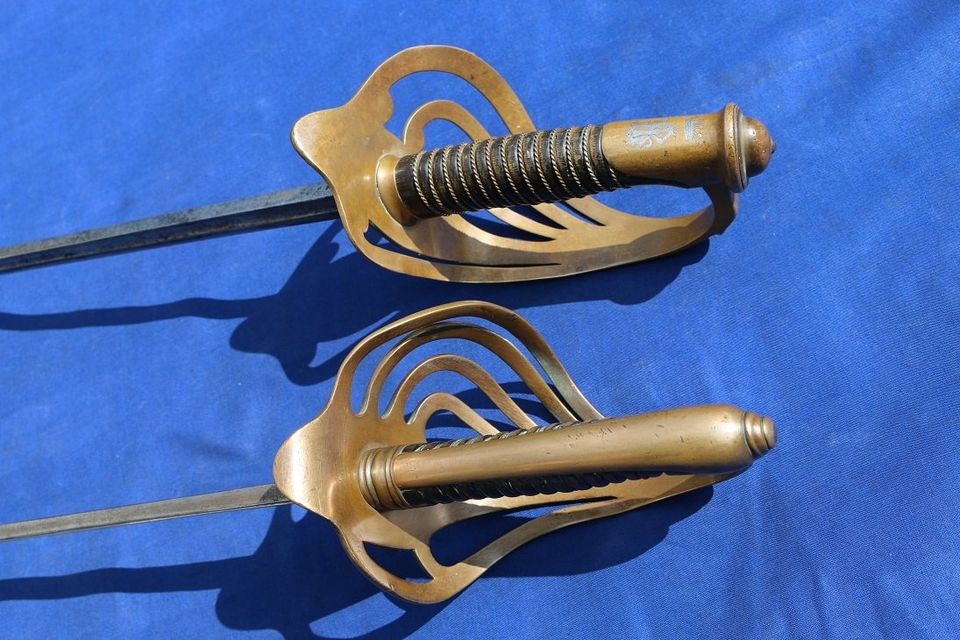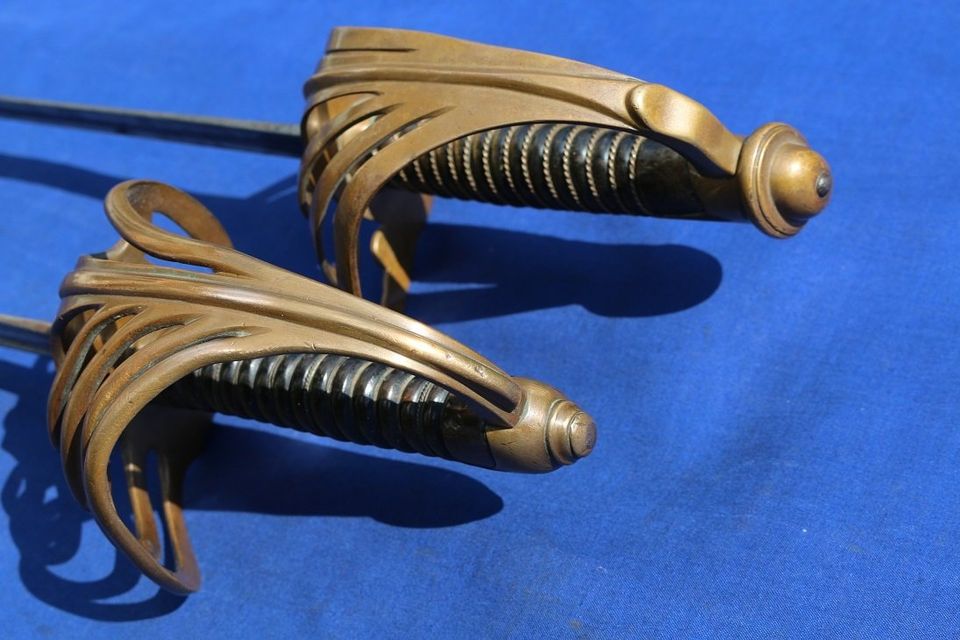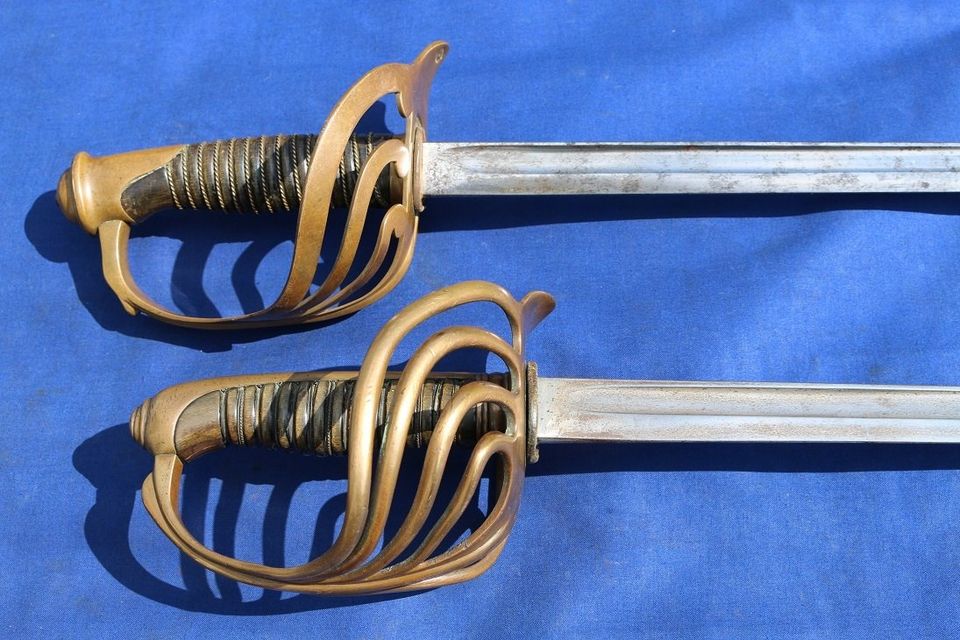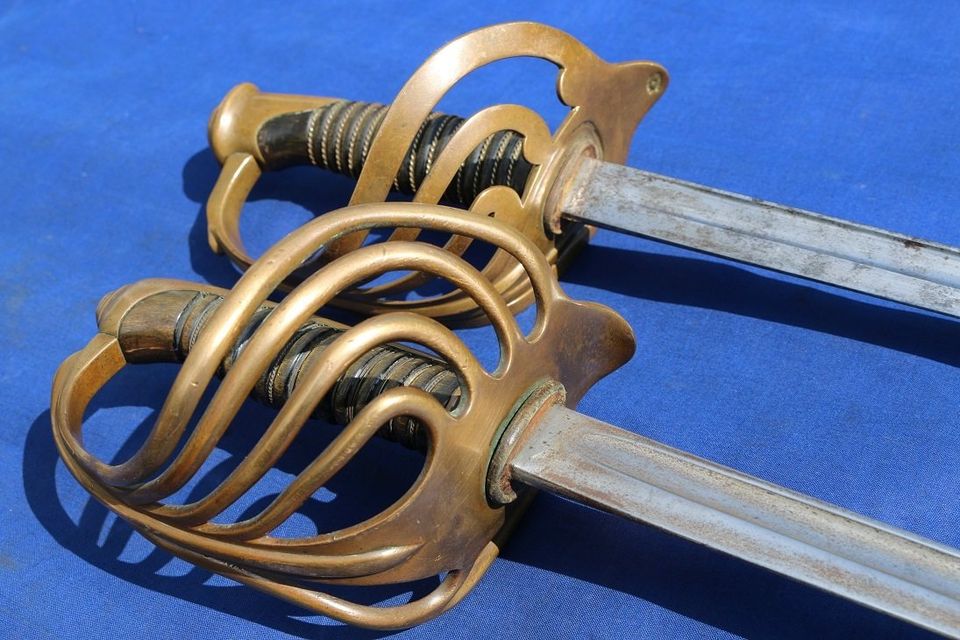Throughout the 19th century in France, as well as the standard regulation models of officers' swords, we sometimes find non-regulation or 'fantaisie' swords. In French these are generally described as "sabre d'officier de fantaisie".These followed some elements of the standard patterns, but introduced unusual elements, such as different blade cross-sections, or especially wide or long blades, or extra bars to protect the hand.
These two swords pictured below are marked to Petitfils and share extremely similar blades. The blades are 93cm and 94.5cm long and although taking the general outline of the 1882 pattern French cavalry blade, are longer, narrower and lighter. In function, these are like single-edged rapiers, being very slender and nimble in the point, and as such clearly seem to be specialised thrusters.
One assumption is that these are officers' 'dress' swords, but both these swords are excellently constructed and critically, both are very extensively and well service-sharpened. The top (cavalry) example below is service sharpened for 40cm of the front edge and 10cm of the back (false) edge. The bottom (infantry) example is service sharpened for 60cm of the front edge and 12cm of the back (false) edge. It's impossible to say why or when they were service sharpened, but given that these swords probably date to around 1900, it is possible that they were sharpened at the start of WW1. Or perhaps they were carried in turbulent colonial regions. It is also possible that they were simply sharpened because the owners wanted sharp swords, or potentially even for self defence or dueling.
The top example with a cavalry style hilt has the slightly shorter and narrower blade (marked to Coulaux & Co of Klingenthal), while ironically the wide and longer one has an infantry officer's style hilt of 1882 pattern. The Coulaux name on the blade and Petitfils mark on the hilt presumably means that the latter was hilting blades by the former. Though in the case of the infantry officer's sword the Petitfils mark is on the blade.
Given that these blades are approximately of 1882 style and the infantry officer's sword hilt is of 1882 style, we may assume that these date to after 1882 (although blades and hilts of these styles did actually appear before the regulation models of 1882). French dealers and auctioneers who have sold similar swords tend to date them to the 1890s or around 1900.
Apart from their general size and outline, with very similar blades and proportions, as well as the Petitfils company connection, there is another factor in common between them; both have aristocratic monograms on their hilts. These are pictured below - the infantry officer's sword having an engraved coronet with initials (now rubbed almost away) underneath, while the cavalry officer's sword has a coronet and initials inlaid in silver in the pommel.
Were these swords perhaps an unofficial way of gentlemen (no longer having titles under the Republic) showing their aristocratic status? It seems very coincidental that both swords, being rather unusual specimens, both have aristocratic monograms.
Whatever their exact place in the history of French swords, they are intriguing weapons, are extremely well made and for a fencer are very pleasant swords in the hand.
